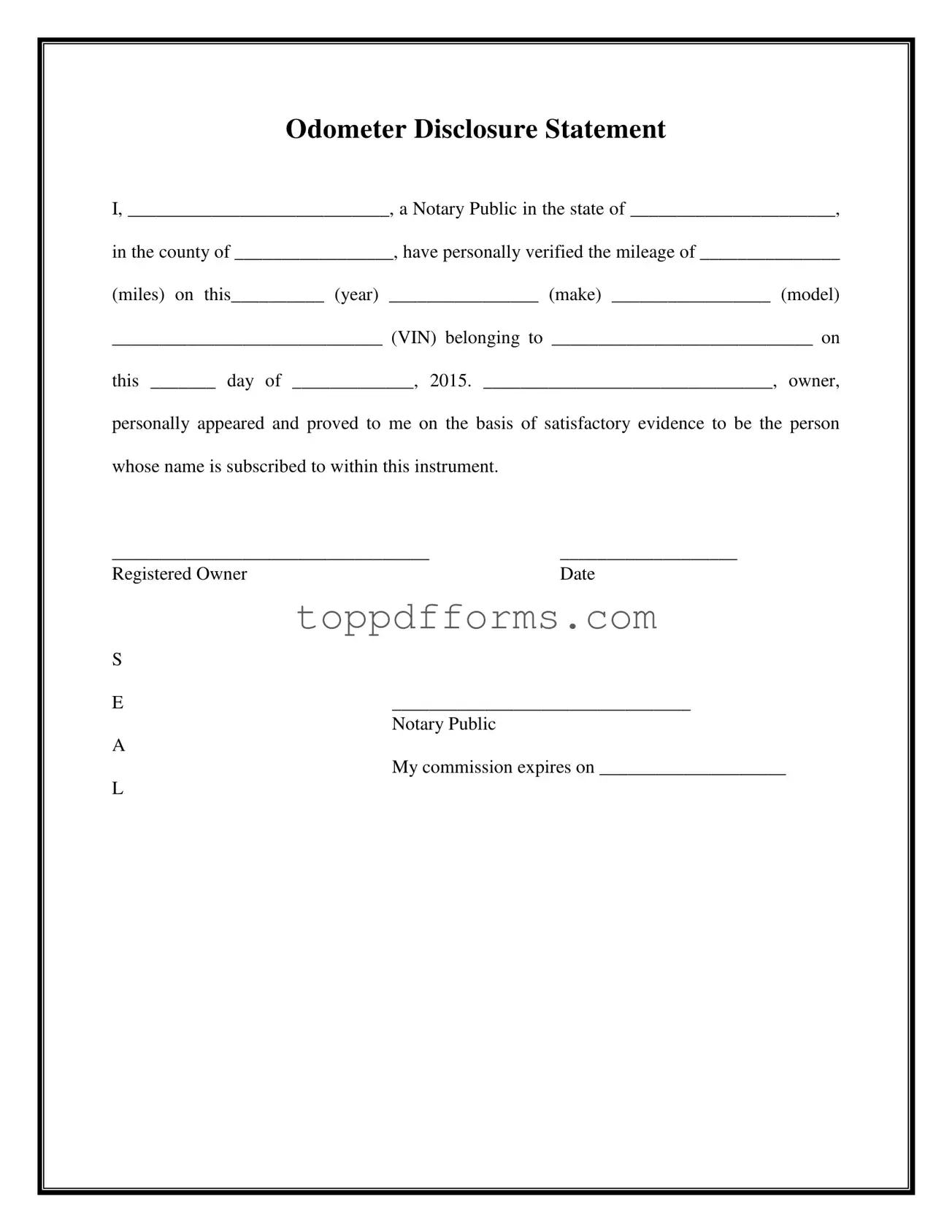What is a Notarized Odometer Statement?
A Notarized Odometer Statement is a legal document that certifies the mileage of a vehicle at the time of sale. This form is typically required when transferring ownership of a vehicle to ensure transparency regarding the vehicle's mileage. It serves to protect both the buyer and seller from potential fraud related to odometer tampering.
Why is a Notarized Odometer Statement necessary?
This statement is essential for several reasons. Firstly, it provides a formal record of the vehicle's mileage, which is crucial for determining its value. Secondly, it helps prevent odometer fraud, where sellers might misrepresent the mileage to inflate the vehicle's worth. Lastly, many states require this document to complete the vehicle registration process after a sale.
Who can notarize an Odometer Statement?
A Notary Public, who is a legally appointed official, is the individual authorized to notarize the Odometer Statement. The notary verifies the identities of the parties involved in the transaction and ensures that the document is signed voluntarily and with understanding. This adds an extra layer of credibility to the document.
What information is included in the Notarized Odometer Statement?
The statement includes several key pieces of information. It captures the current mileage of the vehicle, the year, make, model, and Vehicle Identification Number (VIN). Additionally, it identifies the owner of the vehicle and the date of the notarization. This comprehensive information helps to establish a clear record of the vehicle's history.
Is a Notarized Odometer Statement required in all states?
Not all states mandate a Notarized Odometer Statement for vehicle sales. However, many do require some form of odometer disclosure, which may or may not need notarization. It is crucial to check the specific requirements of your state to ensure compliance with local laws during a vehicle transaction.
What happens if the mileage is incorrect on the Odometer Statement?
If the mileage reported on the Odometer Statement is found to be incorrect, it can lead to serious legal implications. The seller may be held liable for misrepresentation, which could result in financial penalties or legal action from the buyer. It is vital for sellers to provide accurate mileage information and for buyers to verify it before completing the sale.
Can I complete a Notarized Odometer Statement myself?
While you can fill out the form, you cannot notarize it yourself. The notarization process requires an impartial third party—a Notary Public—to witness the signing of the document. This step is crucial for the document to be considered legally binding and to ensure that all parties are protected.
How do I find a Notary Public?
Finding a Notary Public is relatively easy. Many banks, law offices, and public libraries offer notary services. Additionally, online platforms and local directories can help you locate a notary in your area. It's advisable to call ahead to confirm availability and any associated fees.
What should I bring to the notarization appointment?
When attending a notarization appointment, bring a valid form of identification, such as a driver's license or passport, to verify your identity. Additionally, ensure you have the completed Odometer Statement form ready for signing. It's also helpful to have any other relevant documents related to the vehicle sale on hand.
